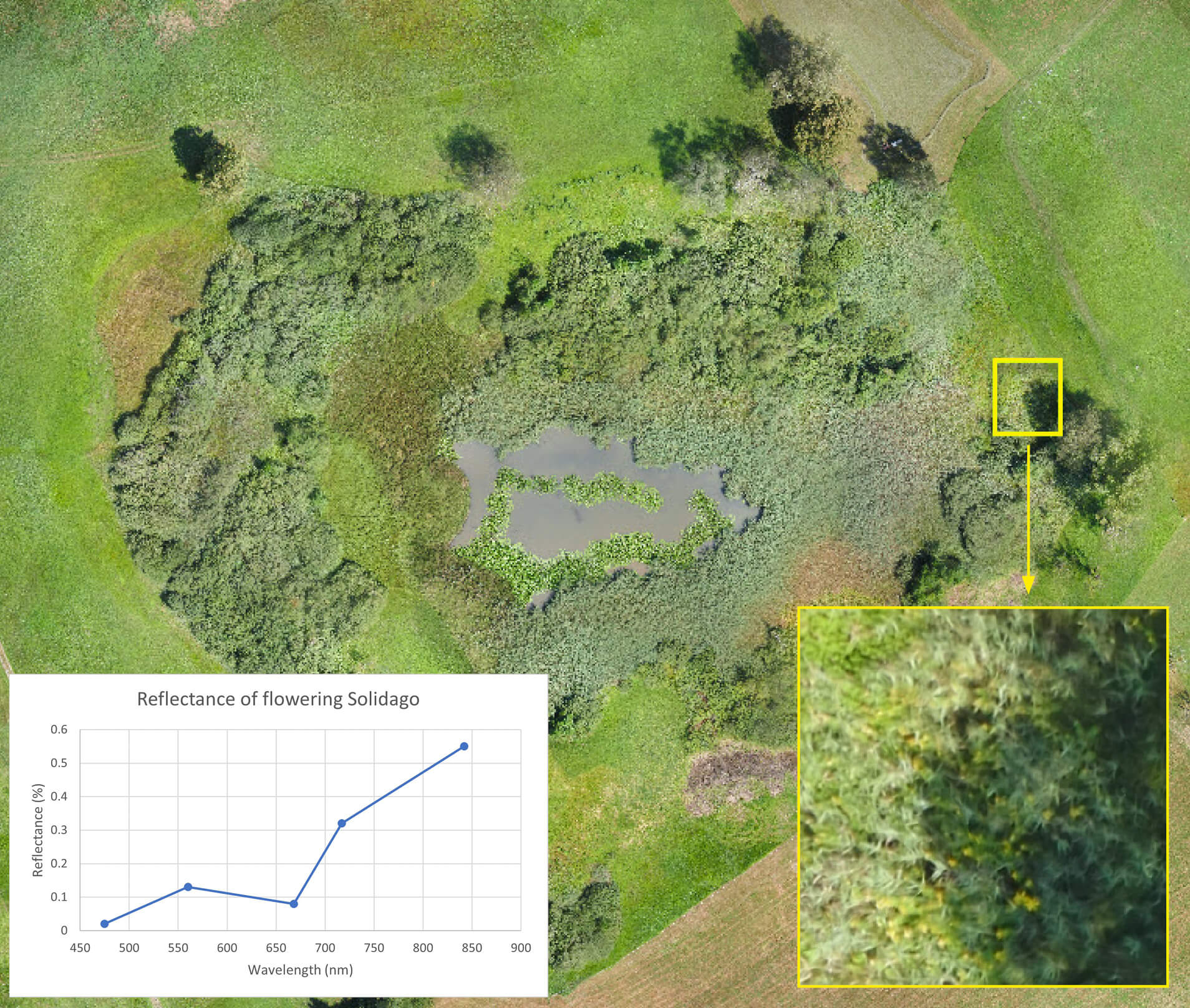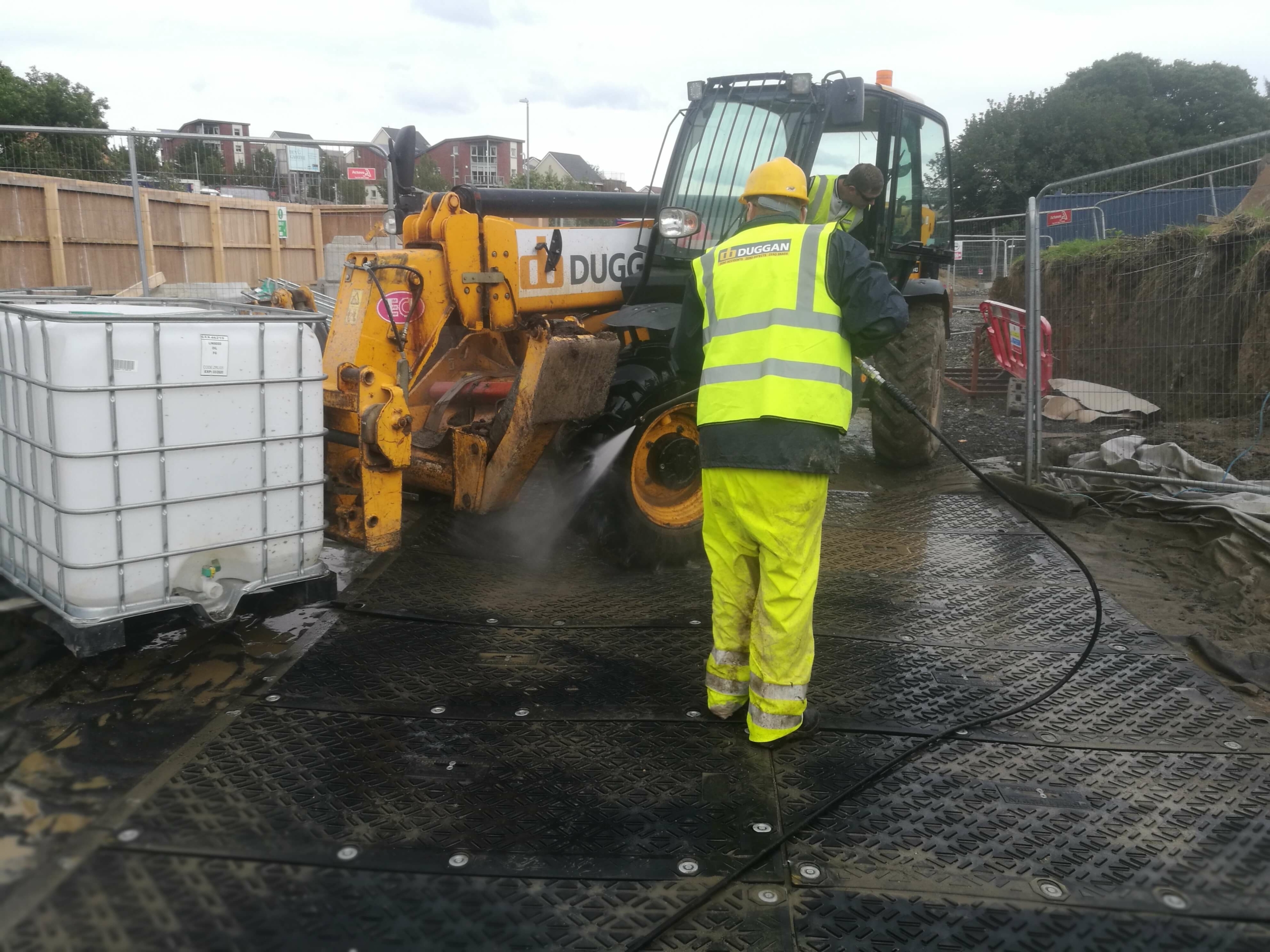General information
Considering local conditions
The geographical and climate conditions often play a role in determining to what extent certain problems occur. Insects or aquatic fauna and flora are often highly adapted to local conditions, in particular temperature and humidity. Shortcuts via canals allow organisms to overcome natural barriers more easily and travel across climatic zones faster, and hitchhiking on vehicles facilitates dispersal over long distances. This means that attention has to be drawn to where these possible shortcuts exist and check-points should be established to detect IAS as soon as it appears and avoid their spread. This could be applied particularly for inland waterways, which in turn requires close international collaboration.
At small scale, the type and frequency of measures applied to prevent IAS highly vary depending on local conditions and accessibility to sites.
Landscaping
- IAS species must not be considered for planting in any landscaping projects.
- Non-native species plantation is not recommended because of the risk to introduce IAS and other conflicts. If it is needed due to any particular condition, expert advice in the choice of species is absolutely essential.
- Extra caution should be taken close to Natura 2000 sites and other areas of particular value for nature conservation.
- Advice must be sought on technical measures to prevent migration of animals that display invasive characteristics, such as protection against climbing and vertical barriers, on waterways.
- The potential effects of any prevention measures on non-target species and ecosystems should be considered.
- Prevention can take place in the infrastructure planning stage or even retrofitted during the operational phase. IAS establishment or expansion can be prevented by choosing certain materials or installing barriers (e.g., geotextiles along linear infrastructure). Expert advice must be sought.
- Any soil brought to the site should be ensured to be IAS free. Best practice would be to take soil from sites secured to be IAS free or use soil that has been treated.
Biosecurity
Living sections of plants and seeds can be carried to new locations by adhering to clothes and equipment. Thorough cleaning of all equipment, machines and clothing is therefore of particular importance (Figure 5.8.5).
- Shoes and boots should have any spores and plant material removed with a brush and then be cleaned with a mild detergent or disinfectant cleaner (e.g., spray-bottle).
- If possible, cleaning should take place directly on site or at a suitable location, but must take place before re-use at locations where there are no problematic species.
- Mower/mulch unit, tires and vehicle should be cleaned with a high-pressure cleaner or pressurised air. Check if any special applicators are available (e.g., for mowing boats).
- If equipment is cleaned with water, the waste water must drain directly to a safe place where IAS spread is prevented.
- Cleaning locations should be regularly inspected for the presence of problematic species.
Vegetation cover management
On land, the best measure to prevent IAS spread is to establish a dense, native, natural vegetation cover (see Section Promote vegetation cover and Section Sowing and greening regional/local seed) and to prevent erosion, bare soil or disturbance which tends to create favourable habitats for IAS. Special caution has to be taken in areas with adjacent protected areas.
Natural vegetation can prevent the establishment of IAS and other species of concern. Road and rail verges, powerlines ROW, as well as waterways embankments are frequently disturbed and this often creates bare soil that is a gateway for problematic IAS. Hence, it is important to prevent bare soil patches appearing and instead promote vegetation cover (see Section Promote vegetation cover) that is suitable to the site conditions (see Chapter 4 – Integration of infrastructure into the landscape). Restoration of verges should be performed in spring and autumn to avoid establishment of IAS flora.
Preventing bare soil and open ground areas
- Sow sufficiently and avoid using seed which has a low germination rate.
- Consider a re-sow of areas experiencing patchy growth with more vigorous native species.
- Avoid mulching when the vegetation cover has grown very high as the mulch layer will suffocate the turf underneath and create an unvegetated area.
Promote vegetation cover
- Use regional/local seed for easier establishment of plants (see Section Sowing and greening regional/local seed).
- Prune in a way adapted to growth to maintain a healthy vegetation cover.
- Adjust cutting height to 10 cm and remove clippings when possible.
- Cut and remove green waste instead of mulching.
Sowing and greening regional/local seed
Location, climate and type of soil/substrate should be considered when choosing seed mixtures (in some countries, there is certified regional seed available; Table 5.8).
Locations can be classified according to conditions observed, such as, wet, dry, shady or sunny.
The soil must be checked visually and/or by mean of soil analyses to ensure it is sufficient for plant growth. Heavy erosion can leave bare ground so some soil and sand can be added to a seed mix. In some cases, a seed mix may be chosen that outcompetes certain IAS as well as promoting biodiversity. Such seed mixes cannot be easily bought off-the-shelf and seeking expert advice is recommended.
If a mixture of grass and herbs has been used previously, re-sowing only with these herbs is recommended as grasses establish more easily.
Table 5.8 – Examples of locations where certified seeds can be sourced in Europe.
| Country | Sites providing information about native seeds and/or where to order seeds | Additional information |
| Germany | Bezugsadressen Samen und Pflanzengut (NABU, 2020) https://www.nabu.de/umwelt-und-ressourcen/oekologisch-leben/balkon-und-garten/trends-service/empfehlungen/00592.html | Provides list with links of manufacturers |
| France | L’interprofession des semences et plants (2023) https://www.semae.fr/en/soc-official-service-for-control-and-certification-of-seeds-and-plants-in-france/ | Certified seed producer |
| Europe | European Native Seed Producer Association (2023) https://native-seed.eu/ | European sites with information about seed producers |
| Europe | European Seed Certification Agencies Association (2023) http://escaa.org/index/action/page/id/13/country/RO | List of European agencies in charge of certified seeds |
Early detection of IAS by monitoring
Regular monitoring and reporting are key elements in the prevention and control of IAS. These measures permit an early detection of an IAS introduction at first occurrence and control measures can be applied quickly. An earlier detection of IAS results in an easier control and eradication of the population. The longer IAS are allowed to become established the more effort will be required to control them and costs will rise, with a corresponding decrease in the chance of complete and sustainable removal (Figure 5.8.2). Knowledge about species concerned is essential for implementing a successful monitoring system. Automatic recognition and, for example GPS-based mapping, can make this process much easier for maintenance staff. The feasibility of automatic recognition via on-board equipment, airships, drones, satellites or simple handheld devices like tablets is being assessed in various projects (Figure 5.8.6). There are several apps available that help to identify species, for instance Pl@ntNet identify. These methods assist in the faster reaction to any outbreak of IAS and prevent dispersal. These fast and efficient methods are well worth investigating. Managers and stakeholders are encouraged to share data about IAS occurrence. Sharing data with environment authorities and research organisations contribute to avoid IAS spread and to encourage further research into innovative technologies.

Keeping digital records of maintenance activities is highly recommended. Sometimes it is necessary to adapt methods to local conditions and often to use a combination of methods. If maintenance activities are properly recorded it is easier to adapt them, keep track of progress and evaluate their success.
In summary:
- Monitoring and reporting early introduction is key to IAS management.
- Measures to prevent IAS spread should be initiated with the first occurrence.
- Measures to prevent IAS spread, progress and success should be digitally recorded.
Communication and training
Generally, improving communication on the importance of preventing the arrival of IAS, disseminating information and thus increasing people’s awareness about the problem is essential for IAS management. In particular, education and training about prevention methods such as biosecurity measures help to minimize introductions and spread of IAS. Also, describing the consequences of failing to control IAS should be highlighted in any communication.
Construction and maintenance staff should be made aware to IAS and other problematic species. They should at least be familiar with general biosecurity measures and ideally should be aware of the most common IAS in their area of responsibility. Furthermore, they should be familiar with the most common control measures or have at least a contact in their area to support them in controlling IAS. Regular education and training seminars for maintenance and construction staff should be offered by the infrastructure authorities.
